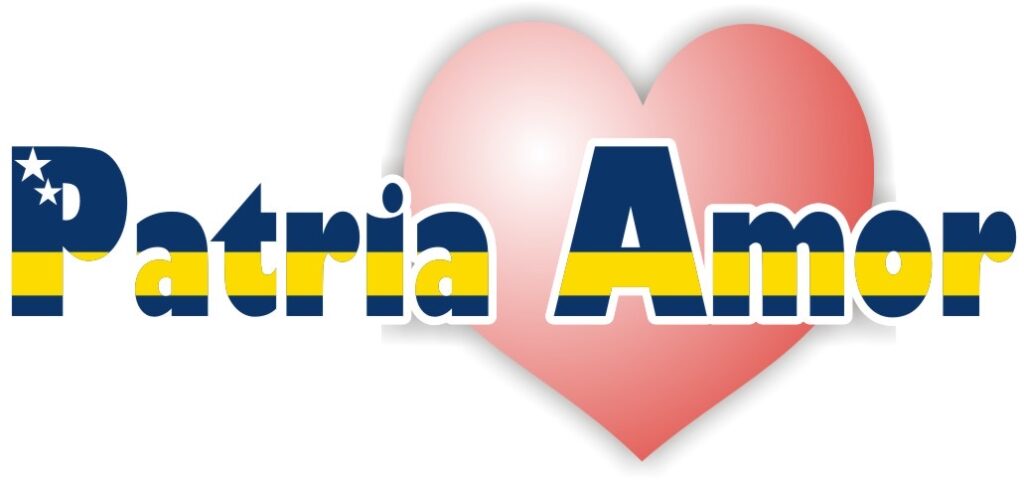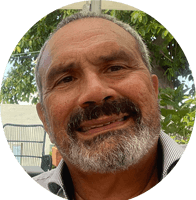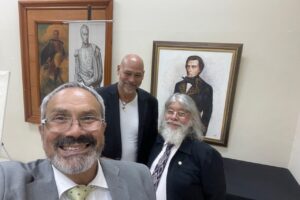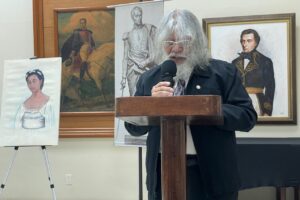
By Tico Vos

A speech delivered in Curaçao has reignited discussions about María Isabel Gómez, the mother of Venezuelan independence leader General Manuel Piar. The event, hosted by the Sociedad Bolivariana, sought to highlight her overlooked contributions to the fight for freedom and the systemic racial and gender biases that erased her from history. However, while the speech celebrated her legacy, it also exposed critical gaps in historical research, particularly regarding her life in Curaçao, her role in aiding enslaved Africans, and her influence on Manuel Piar’s revolutionary path.
A Speech That Fell Short of Available Research
One of the most striking revelations from the event was that Norberto Liendo, the featured speaker and artist, was unaware of the only dedicated website in the world documenting María Isabel Gómez’s history: www.manuelcarlospiar.com. This website has been a pioneering platform in uncovering and preserving the hidden history of María Isabel Gómez and Manuel Piar, publishing well-researched articles on her contributions, exile, and struggles.
Had Liendo been aware of this invaluable resource, his speech could have incorporated much deeper insights into Gómez’s life and activism, rather than merely repeating the limited narratives that mainstream history has acknowledged. This raises a broader question about the disconnect between artistic tributes and serious historical research—a gap that must be bridged if figures like María Isabel Gómez are to receive the recognition they deserve.
María Isabel Gómez’s Overlooked Role in Curaçao
The most glaring omission in Liendo’s speech was the lack of research on María Isabel Gómez’s activities while living in Curaçao. Given the island’s strategic role in the Caribbean, particularly as a hub for trade, military activity, and the transatlantic slave economy, Gómez’s presence there raises significant historical questions:
1.Did María Isabel Gómez assist enslaved Africans in escaping Curaçao?
•Historical accounts suggest that during the late 18th and early 19th centuries, Curaçao was an important site for maroon resistance and clandestine networks helping enslaved people flee to the South American mainland.
•Could Gómez have been involved in these efforts? Given her African heritage and later connections to the independence movement, her role in helping enslaved people flee should be investigated.
•Liendo’s speech, however, made no mention of this critical aspect of Afro-Caribbean resistance, reinforcing the need for further research.
2.Her Impact on Manuel Carlos Piar in Curaçao and Venezuela
•How did María Isabel Gómez shape her son’s revolutionary ideals? While Manuel Piar is widely recognized as a military leader, historical narratives often overlook the influence of his mother in instilling values of resistance, liberation, and Afro-Caribbean solidarity.
•During their time in Curaçao, did she introduce him to networks of political exiles, merchants, or other Caribbean revolutionaries?
•When Piar moved to La Guaira and other revolutionary centers, what role did María Isabel play in his political development?
•Historical research suggests that Piar’s early exposure to political and military affairs came not just from Spanish colonial interactions but possibly from informal revolutionary networks operating between Curaçao and Venezuela. If María Isabel was part of these networks, why has no major historian examined this?
3.Her Role in Anti-Colonial Underground Movements
•If Gómez was politically active in Curaçao, who else did she collaborate with?
•Historical evidence suggests that free Black merchants, sailors, and exiles played a crucial role in independence struggles, yet the extent of María Isabel’s participation remains unstudied.
•Liendo’s speech missed an opportunity to call for deeper research into this neglected aspect of history.
The 2024 “Duna Kara Na María Isabel Gómez” Project and Local Artistic Contributions
Liendo’s speech also failed to acknowledge recent local initiatives in Curaçao that have sought to give María Isabel Gómez the recognition she deserves.
One such project is “Duna Kara Na María Isabel Gómez” (Give María Isabel Gómez a Face), launched in 2024, which has actively sought to reclaim her story through historical research, artistic portrayals, and public discussions. This initiative has sparked a growing movement among Curaçaoan artists to visually reconstruct Gómez’s image and ensure that her story is known beyond Venezuela.
Notably, local painters such as Ashly Mauricia and Aemy Niñafelis have joined this movement, adding their artistic voices to the growing wave of interest in Gómez’s legacy. Their work, alongside that of Norberto Liendo, is helping to keep the Piar-Gómez legacy alive in Curaçao and introduce their story to the world.
However, Liendo’s speech made no mention of these local efforts, further underscoring the disconnect between his portrayal of María Isabel Gómez and the deeper, ongoing historical and artistic movements surrounding her legacy.
The Shared Concern: The Lack of Official Documentation on Manuel Piar’s Family Tree
A recurring concern among historians and researchers is the lack of official documentation on Manuel Piar’s family tree. Despite his pivotal role in Venezuela’s independence, official records on his origins, extended family, and descendants remain fragmented and incomplete.
•What happened to María Isabel Gómez after Manuel Piar’s execution?
•Did she have other children or relatives who played a role in Curaçao, Bonaire, or La Guaira?
•How did Piar’s death impact his family, both in Curaçao and elsewhere?
The execution of Manuel Piar in 1817 was not just a political event—it had severe repercussions for his family, especially María Isabel Gómez. As a widowed, Afro-Caribbean woman in exile, she faced immense hardship, further isolation, and historical erasure.
There is also little documentation on how her extended family in Curaçao and Bonaire responded to Piar’s execution. Did they face persecution or financial ruin? Were they forced to distance themselves from his legacy for survival?
Beyond Speeches and Paintings: The Need for Institutional Recognition
The speech at the Sociedad Bolivariana has reignited María Isabel Gómez’s name in public discussions. However, if history is to truly do her justice, researchers must move beyond the surface-level retellings and actively investigate the missing pieces of her story.
Her possible role in helping enslaved Africans escape, her impact on Manuel Piar’s political consciousness, and her involvement in Curaçao’s resistance movements are all critical aspects that remain largely unexplored.
Additionally, governments, historians, and cultural institutions must take concrete steps to recognize the full impact of Piar’s execution on his family and his legacy in Curaçao, Venezuela, Bonaire, and La Guaira.
Will this newfound attention lead to real historical investigation, or will it remain another isolated tribute?
If María Isabel Gómez is to receive true justice, the work must go beyond speeches and paintings—it must challenge the very structures that have kept her hidden for centuries.

Tico Vos is a professional photographer, producer, and tourism specialist. He has been documenting the History, Culture, and News of Curaçao. This site is a documentation of the history of Manuel Carlos Piar.





